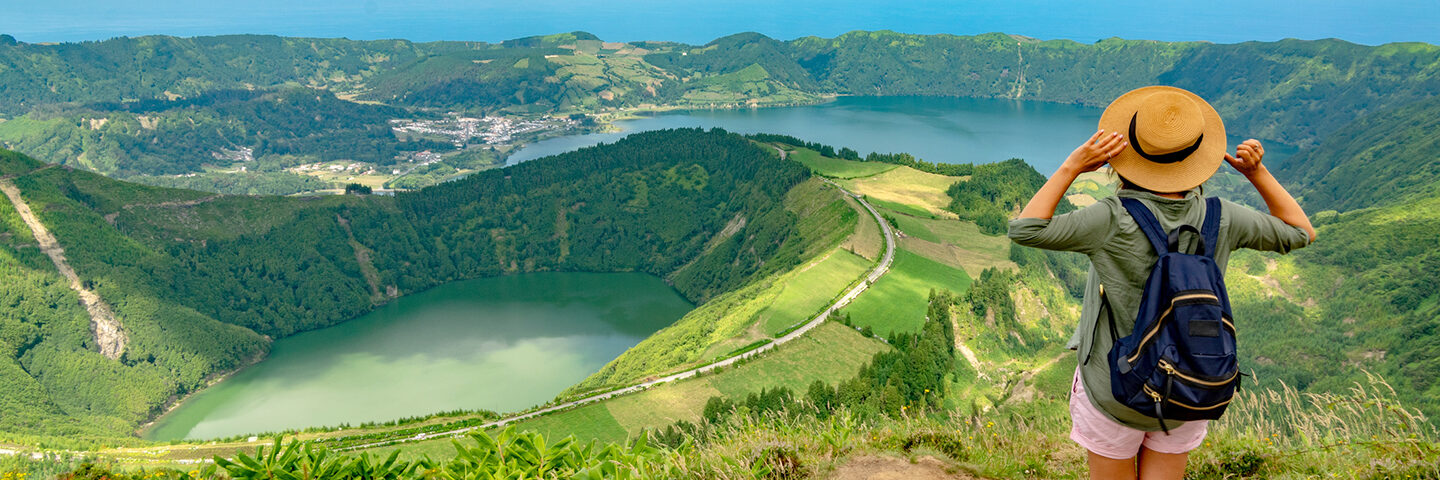
Global Fare: Exploring Produce From The Azores, Portugal
I am lucky to have been born into a big Azorean family. If you are not familiar with Azorean culture, think dinner in the movie “My Big Fat Greek Wedding” and you will get a sense of the type of meals and celebrations our family has; spirited, large, convivial, and characterized by an abundance of food.
The Azores are a Portuguese archipelago in the Atlantic and are sometimes called “the Hawaii of Europe.” The islands are becoming better known to Americans, but they are still undiscovered to many. The economy is driven primarily by agriculture and tourism which makes it a magical place to visit. Natural beauty dominated by ocean views and volcanic rock paired with warm hospitality and incredible food makes for the perfect holiday (I may be slightly biased).
I’m first-generation American; my parents immigrated to the U.S. seeking economic opportunity in the 1970’s. Eventually, they became franchise-owners for Dunkin’ Donuts. While I was growing up, they worked more than full-time and my older siblings worked in the stores as well. So, like many other children born to hard-working immigrants, I was a latchkey kid. I took care of myself in the mornings and on weekends. However, bakery hours meant my family got home from work in the afternoon. Looking back, many of my favorite memories are of the large, late-afternoon dinners that my parents prepared on most days.
If my Dad was cooking, we might enjoy octopus and potato stew (polvo guisado), seafood and tomato stew (caldeirada), or a simple grilled fish, chicken, or steak with tomato salad. When my mom was up to cook, she would prepare dishes like salt cod (bacalhau) with steamed cabbage, carrots, and potatoes (cozido), stewed peas with sausage (ervilhas guisadas), or kale soup (sopa de couves). If time was short, my Dad might throw together a quick salad with chickpeas, olives, boiled potatoes, parsley, and tuna or my Mom might prepare a simple bean and vegetable soup. Most meals in our home were served with fresh bread and sometimes butter on the side.
While Azorean cuisine is defined by its use of seafood and abundant locally produced cheese, it is distinguished by its use of specific local vegetables and funky, Portuguese olive oil. Most Azorean families have small backyard gardens (quintals) and fruit trees where the volcanic soil delivers exceptional flavor to produce grown there. The olive oils vary by region and offer a distinct flavor profile to recipes.
Cooking Azorean food means using fresh, local produce and combining that with whole fish or shellfish or bone-in meats to create deceptively simple and deeply delicious dishes. On the savory side, the most well-loved and well-used veggies and spices are onion, garlic, tomato, potato, yams, peas, fennel, chilies (malagueta), Portuguese kale (similar to collard greens), carrots, cabbage, peppers, parsley, cilantro, cumin, and bay leaves. Recipes feature abundant fish and shellfish, as well as chicken, beef, pork, eggs, and a few varieties of beans (kidney or pinto most often). Common cooking methods include stewing, steaming, grilling, frying, and roasting. Soups are extremely popular and always get their flavor from simmering bones, onions, garlic, and wine together to make stock.
Locally grown fruits are not used in the main meal, but instead are consumed throughout the day. Local dairy products are renowned and often paired with fruit in breakfasts, snacks, or as part of dessert. Classic Azorean breakfast is a fresh roll (papo seco) with cheese, butter, and fresh fruit. A snack could be an assortment of bread, fruit, cheese, olives, sausage (linguiça), and/or nuts.
As a dietitian, I love that that the most common dessert is simply plain fresh fruit. The islands are famous for their pineapples which are smaller than what we can buy in the US and exceptionally sweet. Other favorites include banana, passion fruit, oranges (which are particularly juicy and acidic), blackberries, guava, figs, and melons. Friends or family visiting may warrant cheese to be served with the fruit dessert course.
If you ever get the chance to visit the Azores, or a predominant community in the United States (there are large communities in places like Fall River, MA, Astoria, OR, the SF Bay Area, and Hawaii) take the chance to immerse yourself in one of the lesser-known yet downright delicious European cuisines. Your taste buds will be rewarded!


